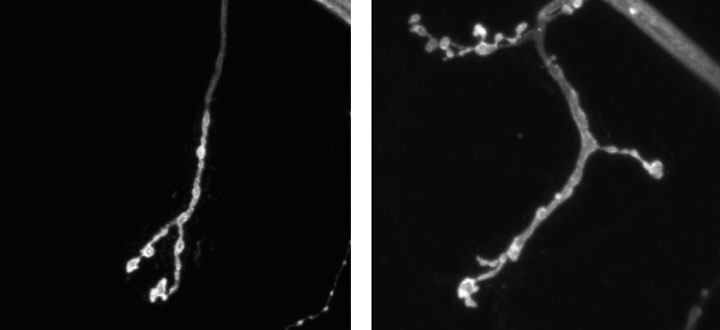The researchers studied the role of synapses – the connections between neurons – in the development of Frontotemporal Dementia, one of the most common forms of early onset dementia.
They uncovered mechanisms, linked to changes in the protein CHMP2B, that caused the synapses to overgrow. The work highlights new steps in the progression of the disease, opening up the possibility of new treatments to halt cognitive decline.
Initial laboratory research was carried out on fruit flies with the findings confirmed in mammalian neurons.
Potential therapies
“These findings shed light on the events occurring in neurons as dementia takes hold,” explained Dr Sean Sweeney from our Department of Biology. “The more we know about the steps that occur in disease progression, the more opportunities we have to intervene with potential therapies.”
Frontotemporal Dementia typically starts in individuals in their fifties. It affects the ability to use and understand language, in addition to a change in personality and a loss of inhibition. The condition is caused by the loss of neurons in the frontal and temporal lobes of the brain.
Dr Ryan West, senior author of the research study, added: ‘‘We hope that this work helps to tease apart complex molecular processes occurring in neurons and identifies how these can go wrong in neurodegenerative diseases, such as Frontotemporal Dementia.”
The research was carried out with scientists at the University of Massachusetts Medical School and University of Puerto Rico. It was funded by Alzheimer’s Society and the Biotechnology and Biological Sciences Research Council (BBSRC).
Vital step
Dr Clare Walton, Research Manager at Alzheimer’s Society said: “We know less about the underlying causes of Frontotemporal Dementia than some other kinds of dementia so research like this is a vital step towards developing treatments for the condition. Further research will be needed to determine whether this mechanism plays a similar role in humans.”
The text of this article is licensed under a Creative Commons Licence. You're free to republish it, as long as you link back to this page and credit us.






